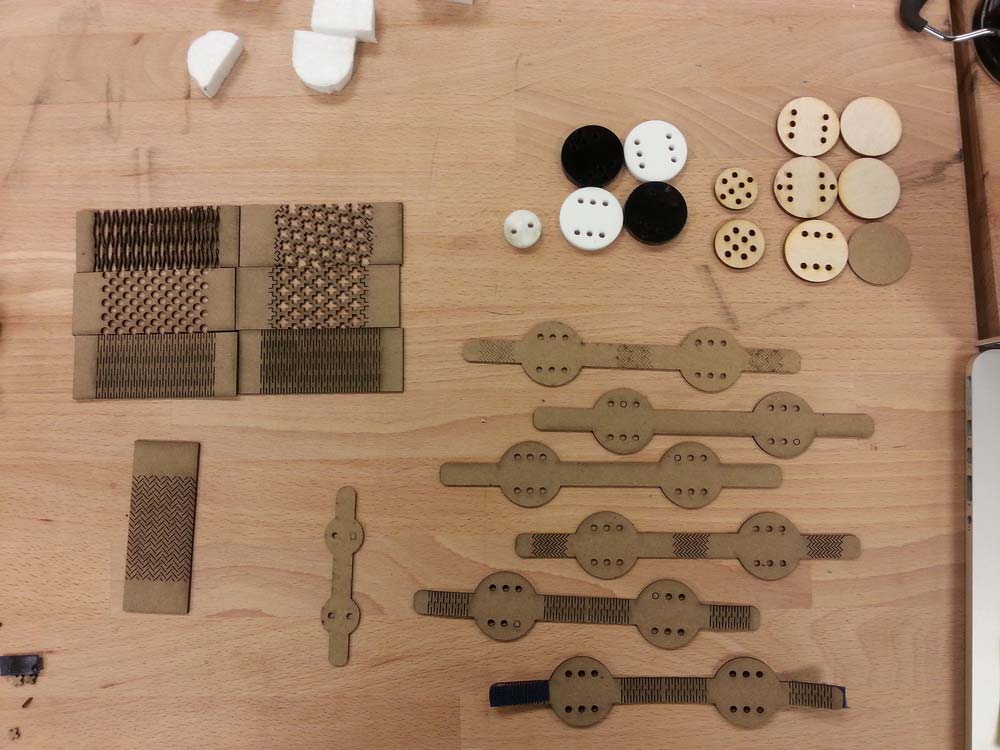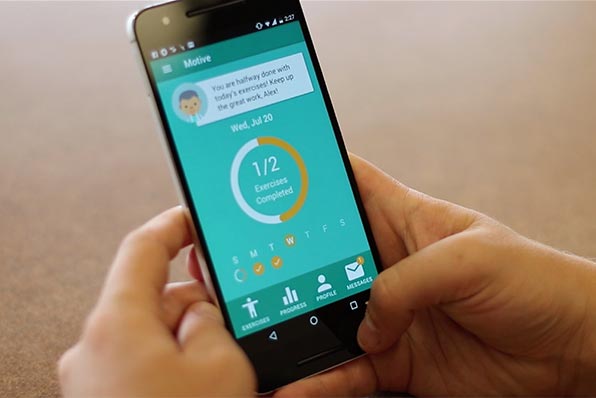An intelligent device to monitor healthy backpack use

SteadyPack is a clip-on backpack accessory that promotes healthy backpack-wearing by informing the user when the backpack is over the recommended weight. We used parallel prototyping using video, model & Arduino prototypes to test our idea in one week.
Goal
How can we help adults and children practice better backpack wearing habit?
Improper backpack use can lead to health problems, such as back, neck, shoulder strain, and headaches. This is especially common and problematic in children, who often far exceed the recommended weight limit of 15-20% of body weight and are in the process of developing postural muscles.
Deliverables
We were already provided with the ideation and were tasked with evaluating the idea by early stage prototyping. At the end of 9 days we were to provide recommendations on interaction and technical feasibility of the idea.
Process

We were already provided with ideation and were not asked to do full UCD cycle. We were working under tight timeline. However we modified our process to include user research indirectly. With just 9 days to evaluate an idea which is also a prototype deliverable, we decided to start with parallel prototypes as our first step. We based evaluation on asking directed questions to validate assumptions on design during user test.

However, our prototyping was not focused on just building what we thought was a solution. We decided to parallel prototype 3 methods to get a holistic evaluation. We wanted to test the viability of idea on multiple fronts including desirability, interaction style and technical feasibility.
Video Prototyping + Surveys
WHY VIDEO PROTOTYPE?
Soliciting concrete feedback on desirability was difficult without exactly showing the user what the product is going to be. We made quick laser-cutout of cardboard and acrylic to use as props for a video. Using After Effects we created a product video. We used this video to get in-person feedback and also sent out a survey.
We had specific questions with this prototype
- Is this product desirable
- Is this problem worth solving using technology?
- What role will this device play in the life of a user?


Behavioral Prototype
We wanted answers to specific questions without having to build a prototype. We used behavioral prototypes to get feedback on
- What will the interaction model look like?
- Will the feedback be haptic or visual?
- When will the device trigger?
- What are the various scenarios when user would rely on SteadyPack?
METHOD
We wanted evaluate the interactions in context and with common scenarios of using SteadyPack. We recruited 3 participants from the survey who were conscious about their back health. We taped a phone on 3 users backpack and manually controlled the vibration and color of the screen remotely while walking with them. For one of the user we emulated a noisy feedback with the prototype triggering for every big movement they made.


FINDINGS
- In many scenarios the user knew he or she was carrying an unbalanced backpack and wanted to ignore the feedback provided. There was a need for mute/ignore button to turn off the feedback.
- User were confused in interpreting just the haptic feedback and preferred both visual and haptic.
- Haptic feedback was useful to indicate an initial unbalanced weight distribution, while visual feedback was useful in manually calibrating the weight.
Evaluating Technical Feasibility
Our motivation for creating an Arduino prototype was twofold: we wanted to evaluate the technical feasibility of providing real-time meaningful information about backpack use and to provide us with a means for user-testing. For the scope of this project, we decided to implement two of SteadyPack’s features using Arduino: informing the user if
- Based on their bodyweight, if their backpack weighs more than the recommended maximum weight
- If the weight was unequally distributed across their shoulders.
Based on feedback from behavioral & model prototyping, we predicted that the way to achieve this would be to use Force Resistive Sensors (FSR) sensors under the bag’s straps (to sample data on weight distribution between the shoulders) and under the bag’s handle. The sensor mounted on strap provided weight distribution feedback and the sensor on the handle provided feedback for absolute weight of the backpack.


CONSTRUCTION
We wanted to make a modular standalone sensor which can be plugged into a Arduino. In our early sketches, we imagined using rubber padding in between the sensor and the strap, to evenly distribute weight over the sensors active surface, reducing sudden fluctuations. We ended up being able to use a couple of layers of electrical tape to achieve the same effect. Even with this padding, there was still too much noise when we tested it. We tackled this by signal processing in Arduino (smoothing and segmentation). We then identified 6 features for supervised learning through SVM (RBF) for further usability with noisy conditions. We ran into significant performance issues at this point and realized we might need to switch to something much powerful like Raspberry Pi. However we were able to evaluate the feasibility of the idea.
Reflection
IMPROVEMENTS
We spent more time on producing a very high fidelity product video. A lower fidelity would have served the purpose and we could have spent more time testing 2 more users on behavioral prototypes.
OUTCOMES
We were effectively able to identify interaction recommendations for the product. We also were able to pilot the initial technical feasibility work.
LEARNING
Parallel prototypes are great for rapid evaluation especially if you have an option to leverage skills from different team members.
FUTURE DIRECTION
We tested this idea as a standalone wearable. Partly because it was part our brief and we also wanted this device to be passive – a device which a user clips on and don’t get inundated in configuring it. However we would like to explore what would be the experience of having a companion app to configure, log and visualize backpack wearing habits.
Other Projects
product
01

Helping physical therapy patients adhere to their exercise regimen
view solution
web-app
02

Helping instructors deliver better eLearning experience
view solution
Visualization Standards
03

Helping oceanographers build visualization standards
view solution
Physical Computing
04

An intelligent device to monitor healthy backpack use
view solution
Prototyping
05
